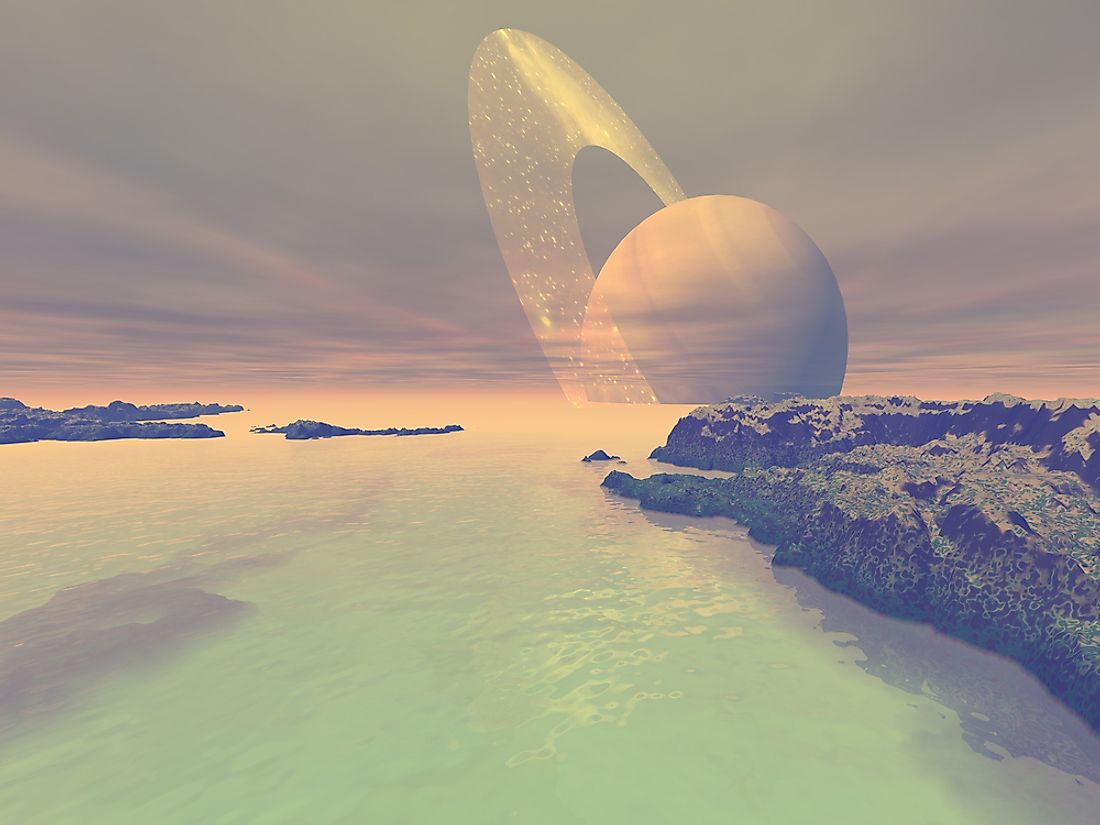Kraken Mare: The Largest Methane Sea Known To Humankind

Where Is The Largest Methane Sea Located?
Titan is the largest moon in the Planet Saturn. It has a strong atmosphere with a pressure greater than that of the earth. Titan is almost double the size of the Earth’s moon. It is the only object within the solar system with an accumulation of liquid on its surface and mainly made up of water ice and rock elements. The atmosphere on the surface of Titan is mainly made up of nitrogen and other elements leading which reacts to form methane and ethane clouds. The climate on Saturn’s moon creates a similar surface to those of the earth including lakes, dunes, rivers, and seasonal weather patterns. The Titan’s methane cycle is similar to the Earth’s water cycle.
Titan's Many Lakes
Titan hosts several lakes composed of natural gas and liquid hydrocarbon. The lakes and seas in the moon contain more volumes of oil reserves than the proven Earth’s reserves. The NASA Cassin space probe has discovered several lakes and rivers in Titan’s polar region. The lakes and rivers in Titan are not filled with water, but liquid methane since the water on the surface of Titan are frozen solid playing a similar role as the earth’s silicon-containing rocks. The lakes cover a small percentage of the surface and can be spotted near the poles making the Titan drier than the Earth. Some of the known large seas in Titan include Ligeia Mare which covers an area of 48,649 square miles (Slightly larger than Lake Michigan-Huron) and Kraken Mare which is three times the size of Ligeia Mare.
The Kraken Mare
Kraken Mare is the largest known liquid body. The lake was discovered in 2008 by the Cassini, and it is rich in methane and other hydrocarbon components. The name “Kraken” reflects a legendary sea monster. Kraken Mare covers an area of 154,441 square miles and has a maximum depth estimated to be 115 feet. However, the researchers have only measured a portion of the sea. Thus, the sea is likely to be deeper than the depth estimated. It is thought to be larger than the Caspian Sea which is the largest sea on Earth. Kraken Mare has an island called Mayda Insula and may be hydrologically connected to Ligeia Mare, the second largest sea on Titan.
Cassini also observed two mysterious objects on the surface of the sea that was island-like and was thought to be debris or waves. The sea has a narrow constriction of about 17 km wide and smaller than Strait of Gibraltar. The constriction has been named Seldon Fretum and often termed as the “Throat of Kraken Mare.” Seldon Fretum is the location for the sea’s significant current. The composition and other numerous properties of the Kraken Mare Sea are still under scrutiny. The exact composition of the hydrocarbon making the lake is still unknown. However, it is estimated that the lake contains about 75% ethane and 10% methane, 7% propane, and 8% of other chemicals like hydrogen cyanide, nitrogen, and benzene. Its depth and effect on Titan and other existing lakes in the region are still under research.











